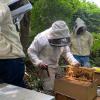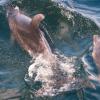History of Protected Area Designation, Co-management and Community Participation in Belize
Ever since the arrival of the British into Belize, then British Honduras, in the early 17th century (Leslie, 1997; Bolland 2004), the Belizean economy was primarily based on the exploitation of the country’s bountiful timber resources. The logwood (Haematoxylum campechianum) was raison d etre for the British; its trade flourished until the late 1700’s followed by the harvesting of mahogany (Swetenia macrophylla), cedar (Cedrella mexicana), rosewood (Swartzia cubensis), santa maria (Calophyllum brasiliense) and other hardwood species until the late 1800s (Bolland 2004). Thus, for much of Belize’s history, the exploitation of its forests continued to be the mainstay of the economy until 1959, when large scale agriculture began to replace forestry as the primary income earner (Leslie, 1997). Nonetheless, compared to our Caribbean and Central American neighbors whose economies were based on large scale agriculture, the historical dependence of forestry spared much of Belize’s forest (Leslie 1997) where today, the country boasts a forest cover of some 69% (Meerman and Sabido 2001), of which some 52% have protected area designation (GoB 2005 ). However, the situation is changing with an alarming deforestation rate of some 2.3% annually - almost doubling the annual Central American deforestation rate of 1.2% (Di Fiore 2002). At this rate, the forest cover will be reduced to 58% by 2020 if current trends continue unabated (GoB 2005). The exploitation of timber resources (e.g., between 1797 and 1802 over 4.5 million board feet of mahogany were exported; Bolland 2004) and the subsequent agricultural development have both exerted immense pressure on Belize’s ecosystems. The exploitation of Belize’s forest resources proceeded for much of our history with scant attention being paid to the environment and the need for protected areas to conserve our rich biodiversity. This chapter will discuss the history of protected area designation and management in Belize from the 1920s to today with emphasis on how this process has changed over time. In addition, the role that co-management has played in Belize's Protected Areas System will be discussed with a focus on community co-management to the present time. It will discuss some of the successes and failures of co-management with directions for the future.
Area of Interest: Belize
Year: 2007




